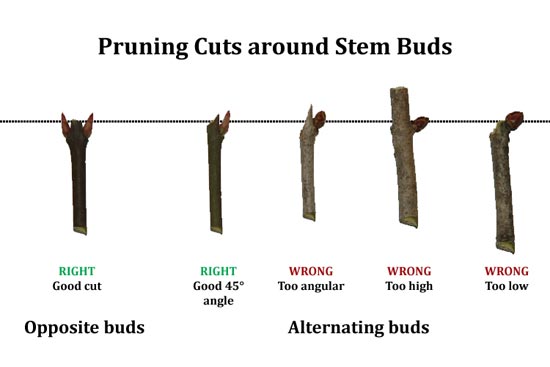There are a number of reasons to prune flowering shrubs. Done properly, pruning can be very beneficial.
Pruning can rejuvenate your plants, but timing is critical. Spring flowering shrubs should only be pruned in the first few weeks after they have bloomed. Even if your plants seem to be thriving on their own, aesthetics is a consideration. Pruning is done to shape a plant or to restrict height and width. Depending on timing, it can enhance or reduce flowering. It’s also the first step to repairing damage.
Spring flowering shrubs like forsythia and lilac start forming their buds early. In fact, next year’s buds form just a few weeks after this year’s bloom period ends. Any pruning you do on these shrubs after the buds have formed will result in reduced blooms. So, except to remove damaged portions, spring flowering shrubs should be pruned within the first few weeks after the current year’s blooming is completed.
In most cases, these shrubs should be left to grow to their natural height and width. You can keep them growing and blooming for many years with annual rejuvenation pruning. Remove up to one-third of the oldest canes each year at ground level. New canes will shoot up and fill in. If necessary, cutting back can be done simultaneously.

Summer flowering shrubs form their buds just ahead of flowering, so prune them in the spring, or after flowering. In most cases, early spring pruning is best. Late summer pruning can stimulate extra new growth that is more susceptible to winter injury. Summer flowering shrubs can be shaped or lowered.
There are two different ways to prune shrubs other than removing canes at ground level. If you are primarily cutting back small growth (smaller than a pencil), hedge shears can be used. You can make the cuts anywhere to shape them as you want. These are sometimes called heading cuts. One to three new buds will form at each cut. This style of pruning also thickens the plant.
If you are thinning the shrub or cutting larger branches, you should use sharp pruning shears or a pruning saw. Make all cuts at back to its origin at another branch. As with pruning of damaged branches, the cuts should not be painted or covered in any other way.